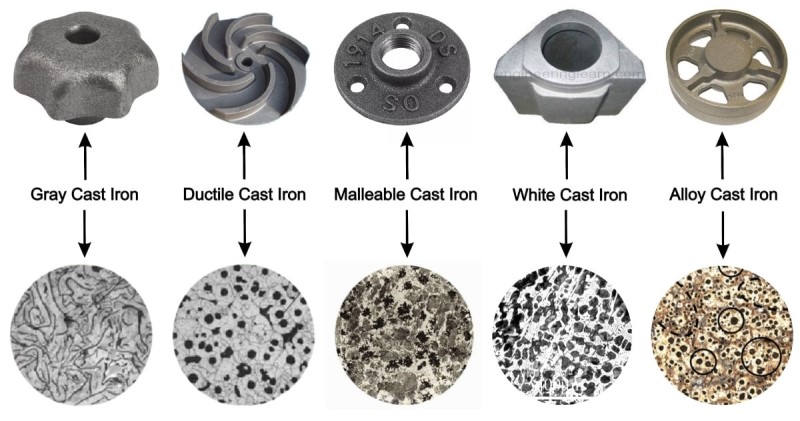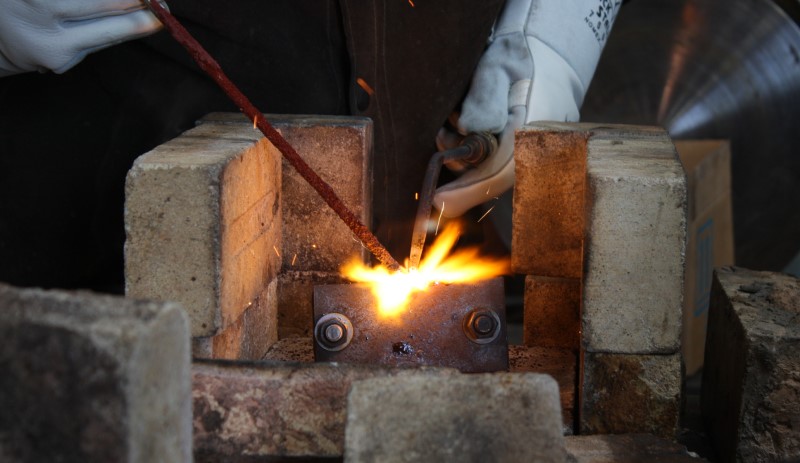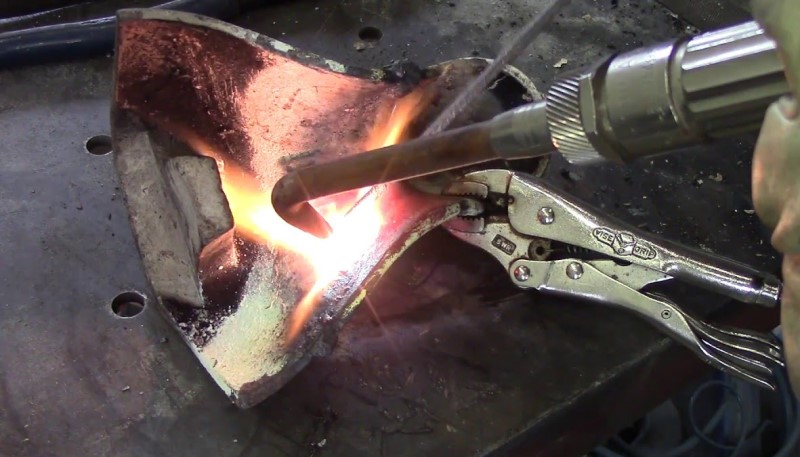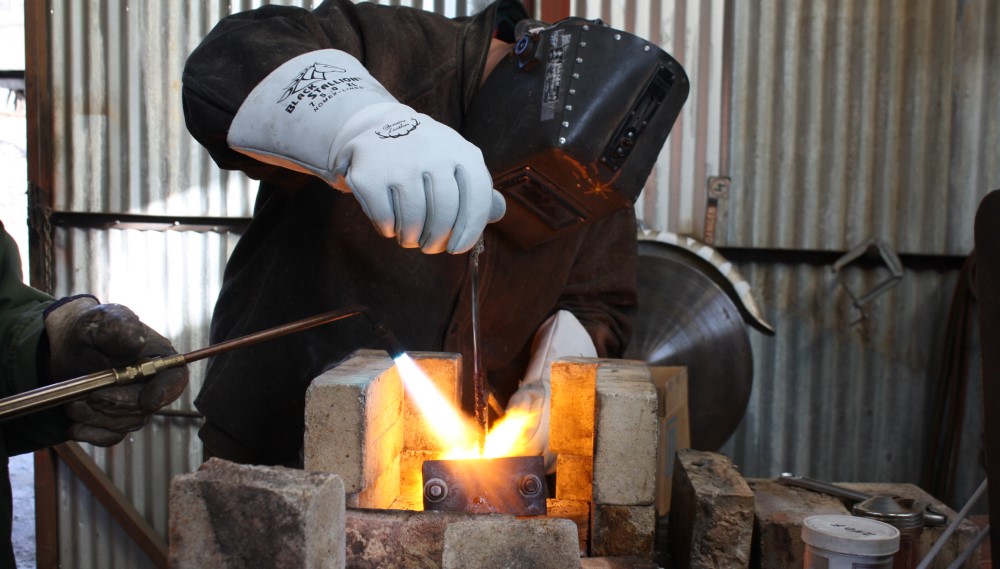A MIG welder is a device that uses a gas-powered electric arc to join metal pieces. Cast iron is a material that is commonly welded because it generates a lot of heat and frequently has dense welds. Here WeldFAQ provide how to weld cast iron with MIG welder, stay tuned to expand your knowledge!
Cast iron properties
Cast iron is a metal made of silicon, manganese, phosphorus, and sulfur in addition to iron, which makes up more than 95% of the metal and carbon, which makes up 2 to 3% of it.
Cast iron is easy to smelt and has a high melting point, making it unsuitable for welding, with a melting temperature that is around 300 degrees Celsius lower than that of iron, or 1,150 to 1,200 degrees Celsius. Cast iron can only go from solid to liquid for a brief period of time, making welding cast iron more challenging than welding iron.
Cast iron welding regulations must be understood by welders in order to avoid changing the cast iron after welding and causing the weld to fail to satisfy output standards. Nowadays, spherical cast iron, gray cast iron,… are frequently used in mechanical welding to create machine bodies, shells, belts, flywheels, crankshafts, rolling shafts, bearings, and gears.

How to weld cast iron with MIG welder
1. How to weld cold cast iron
Cold welding, also referred to as no preheating, transfers the least amount of heat possible to the weld in order to prevent the development of white border areas. The cold welding process is regarded as being straightforward and user-friendly in cast iron welding techniques.
Generally, welding should be done in parts no longer than 2-3 cm, and when each area is finished, it should be allowed to cool completely before being handled. The weld must first cool to a temperature that can be reached by hand (below 50 degrees Celsius) before the subsequent portions can be completed.
In order to avoid having to wait for the prior weld to completely cool, you can do inverse or symmetrical segmental welding on cold cast iron.
2. How to weld hot cast iron
To begin, you must heat the soldering iron to between 600 and 650 oC, and you must maintain this temperature throughout the welding procedure. Be aware that the heating rate is 120oC/h. After soldering to 120oC/h/25mm thickness in a furnace or insulating sheath, carefully cool.
You can execute cast iron welding when the solder turns a ripe tomato color or when you use dry pine to lay it on the hot surface and the pine wood transforms to flying ash. This is the trick to knowing the proper firing temperature.
3. How to weld cast iron properly
For the optimum welding process, it is vital to wipe dirt and oil off the solder surface prior to welding any material. Rust, paint, and other impurities should be carefully removed from cast iron surfaces.
To help prevent cracking while welding, pre-heat cast iron. Cast iron is a very brittle material that can continue to shatter while being used and while being welded. To stop the crack from expanding after welding, first drill tiny holes at both ends using a drill diameter that is only two thirds the thickness of the solder.
After that, you begin welding on cast iron at the start of the fracture and keep going until the welds meet. Finally, you must seal the holes that were previously drilled. Make use of a cast iron welding iron with low hydrogen content.
You must utilize a jig to fix the workpiece if the solder is challenging to fix. For a strong weld, set the solder in the flat welding position. The position must be fixed in one spot when cast iron is being welded in order to prevent the weld from deforming or the development of new cracks. Create a price chart if fixing it is difficult.
Cast iron is challenging to weld, thus to prevent fractured cast iron, welders must select the proper welding rod and control the welding current. Create the weld by moving slowly and deliberately throughout the process.
The cast iron should gently cool to room temperature after welding. Cast iron is treated by being heated to a high temperature and then slowly being cooled. To restore a smooth surface and get rid of any roughness in the weld, grind or file it.
Note: Due to its fragile nature, cast iron can be challenging to weld, therefore it’s crucial to carefully follow these instructions to produce a strong and long-lasting weld.

Frequently asked questions (Weld FAQ)
Why should we weld cast iron with MIG welder?
Cast iron may be successfully welded using MIG welding because it creates strong, reliable welds with little porosity. Large or complex cast iron components can be welded using the MIG technique because of its quick welding speeds and simple parameter management. Additionally, a variety of filler metals can be used during MIG welding to match the unique characteristics of the cast iron being welded.
Differences between welding cast iron with MIG and other welding processes
Equipment: MIG welding requires a specialized machine and equipment to generate the high-heat necessary for welding cast iron, whereas other welding processes such as TIG, stick, and oxy-acetylene welding do not.
Speed: MIG welding is faster than TIG or stick welding, making it ideal for welding large cast iron components where time is a concern.
Welding rod: MIG welding uses a solid wire electrode, while other welding processes typically use a filler rod or electrode.
Weld appearance: MIG welding produces a smooth and consistent weld, while other welding processes such as TIG and stick welding can result in a rougher or more textured appearance.
Heat input: MIG welding typically produces higher heat input into the cast iron which can be controlled through the use of shielding gas, this helps to prevent cracking and warping. Other welding processes, such as TIG and stick welding, use lower heat input which may not be as effective for welding cast iron.

Final thoughts
In conclusion, welding cast iron with a MIG welder has several advantages, including ease of use, consistent results, precision welding, high deposition rate, and versatility. However, it’s important to note that MIG welding requires a shielding gas, so proper equipment and setup is necessary.
It’s also important to use the right filler metal and welding technique to ensure a strong and durable weld on cast iron. Consulting with a professional welder or following proper guidelines can help ensure a successful outcome when welding cast iron with a MIG welder.

